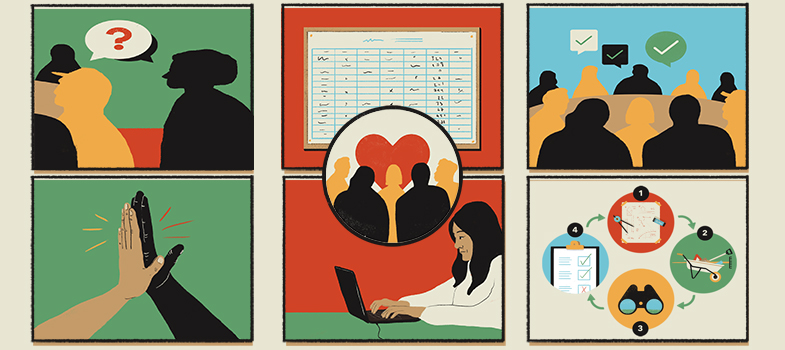Video mediated dialogue
2. First steps
Step 1 - Video production
Videos of community owned solutions, community challenges and monitoring results produced in Unit 6 are produced by communities to share with decision-makers.
These videos were made by community researchers in the North Rupununi, Guyana about traditional knowledge, its role in biodiversity conservation, and the relationship between Indigenous communities and the Iwokrama International Centre who manages the Iwokrama Forest protected area.
Videos: https://vimeo.com/showcase/
Step 2 - Pre-screening preparation
Before screening the community videos to decision-makers it is useful to have a pre-screening discussion with your community or the community you are working with to clarify any issues or themes arising from the community videos, and to identify any implications for the screening. The following questions can be used as a guide to shape the discussion and to help direct the engagement (Shaw 2017). The questions in bold are often the most important to consider:
- What is the purpose of the engagement? Are you aiming to connect decision-makers with the reality of your situation, deliver a message, provoke them to think, or inspire them to act?
- How will you identify and find the most appropriate decision-makers to engage with? Can you find those with the power to implement change?
- Do you have any contacts in influential positions who champion your cause and will help you build relationships? If not, how will you find people to support you?
- How will you invite decision-makers and explain how you will engage with them so that they are motivated to come and know what to expect?
- Will your community members be involved or someone on their behalf?
- What are the advantages and disadvantages of having help from external partners (e.g. national and international NGOs, media organizations, project intermediaries)?
- How will you communicate with decision-makers? Ideally you build mutual trust and collaboration whilst, if needed, speaking truth to them, or calling them to account?
- Are there likely to be negative or unexpected reactions? How will you stop potential risks to vulnerable community members?
- How can you build on an initial exchange to generate future collaborations?
- What are your plans for following up promises and offers made by decision-makers during the exchange?
- How can you encourage active commitment on the part of decision-makers to support community-led change?
